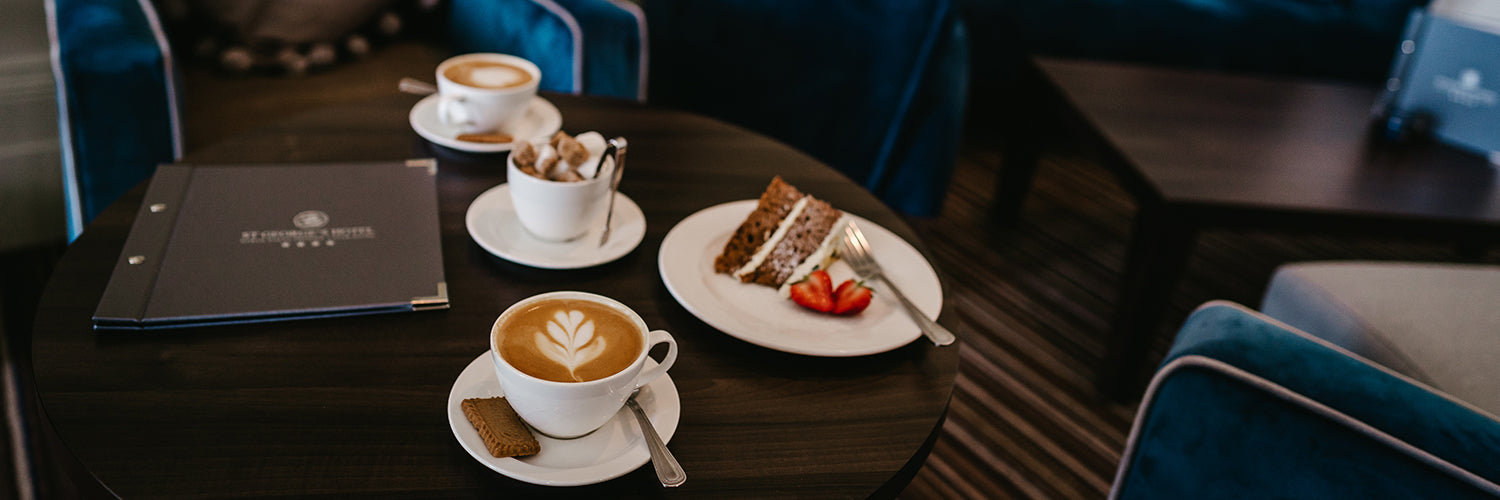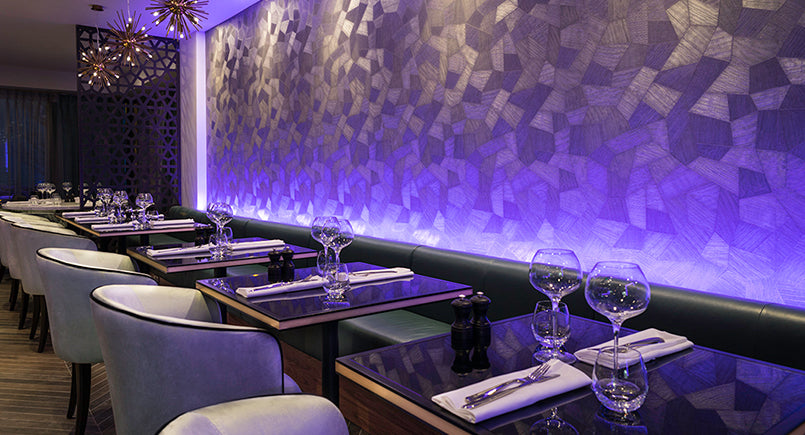Total: £0.00

Part 3. Hospitality Furniture Care: How To Clean Table Tops
Luxury hotel and restaurant tables can make a stylish addition to any interior design, but it’s important to ensure they withstand the rigour of a busy hospitality environment. Knowing how to clean table tops properly is often a neglected area of furniture care, but it isn’t as complicated as it might seem to be. From dining tables to conference tables, we’ve compiled some simple tips and tricks on how to keep your hotel and restaurant table tops looking their best.
How to Clean Wood Table Tops
Wood is a design staple in most hotel and restaurant interiors due to its durability, but knowing how to clean wood table tops is essential for maintaining the timeless appeal of your furniture.
When using a solid wood table top design as part of your loose furniture scheme it will more often than not be treated with a heat resistant lacquer for contract use. Whether you opt for light or dark finish, contemporary or traditional, there are a number of easy furniture care tips you can follow to ensure that pieces stand the test of multiple customer use throughout the day:
- Solid wood table tops can be easily maintained with soap and water. Use a microfibre cloth to pick up dirt particles first – otherwise they’ll end up being pushed around in warm water.
- Often people opt for spray polishes to leave wood with a shiny surface. However, spray polishes should be used with caution, as they can often result in a build up of residue.
- Do not use any sanitiser, degreaser or other cleaning products that contain harsh chemicals – they can cause permanent damage to wood grains and affect the protection of the lacquer finish.
- If your table top requires a deeper clean, try using soap flakes and warm water. Make sure you choose dissolvable soap flakes, as some detergents have a tendency to dull wood.
- When it comes to solid timber, ensure table tops maintain their original colour and are protected against spills and stains by frequently retreating them.They may require a light sanding before being retreated.
- Oiled finishes do not provide as much protection as lacquer finishes, and are not as durable. To avoid permanent damage, particular care should be taken to wipe up spills immediately

Protecting Wood Veneer Table Tops
Although veneers tend to be less expensive than solid wood options, veneer table tops can be used to create longlasting, high-quality bespoke pieces of furniture. Veneer offers more design flexibility, but due to the nature of the veneer and high footfall that is to be expected with contract furniture it will scratch, dent and chip easily. This can easily be overcome by protecting from damage by covering with a glass top.
When cleaning a veneer table top, use a damp, lint-free cloth and wipe in the direction of the wood grain. For more stubborn marks, add soap to your cloth and rub more firmly. If you want to remove small scratches, apply a small amount of oil polish and rub the area until they are no longer visible. To protect your veneer, avoid using wax products on a regular basis and dust the surfaces instead.

How to Clean Laminate Table Tops
When cleaning High Preassure Laminate (HPL) table surfaces in a hospitality setting, the first port of call is dusting on a regular basis. This will help to prevent dust particles from accumulating whilst also improving the overall look of your hotel furniture. You should also:
- To remove drink ring marks wipe with a damp cloth soaked with soapy water. If a deeper clean is required, use a stiff, nylon brush to concentrate on small areas (rather than using large, sweeping motions).
- For stubborn marks, a careful application of nonabrasive cleaning cream can be used, but test a concealed are first.
- Keep laminate furniture out of direct sunlight where possible, to reduce any fading effects.
- Avoid using dusting sprays and polishes. They won’t have the same effect as they would on other surfaces, as laminate isn’t porous. This means that the product ends up building on the surface and being pushed around without being absorbed into the material.
- For laminate tops with a solid hardwood edges or MDF edges which has been stained and polished, please follow the tips above for wood table and veneer table tops.

How to Clean Glass Top Tables
Glass table tops can add a light, modern feel to restaurant and hotel interiors, but knowing how to clean glass top tables is crucial for maintaining their transparency and reflectiveness. Although glass is an attractive material for contract tables, it is known for highlighting any dust, dirt or streak that might go unnoticed on wood or laminate surfaces. When it comes to cleaning glass top tables, we suggest:
- Using water and vinegar on a lint-free cloth to wipe down glass table tops. Water and vinegar mixed together make a failsafe streak-free glass cleaning liquid.
- Carefully wiping moist glass surfaces after cleaning to avoid streaks. One of the easiest way to do this is by using paper towels, as they absorb moisture quickly and remove streaks in the process. If you have it to hand, newspaper is also an effective option for removing noticeable streaks.
- While the underside of a clear glass table top probably won’t require as much cleaning as the surface, it is a good idea to dust it regularly to keep it looking its best. This will prevent dust particles building up underneath that can be easily spotted when light hits the table.
Get in Touch
If you would like to find out more about our custom or bespoke hospitality furniture options, get in touch with our customer services team today.
